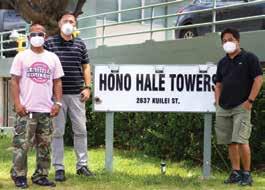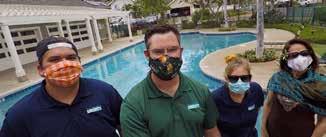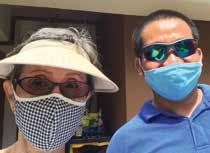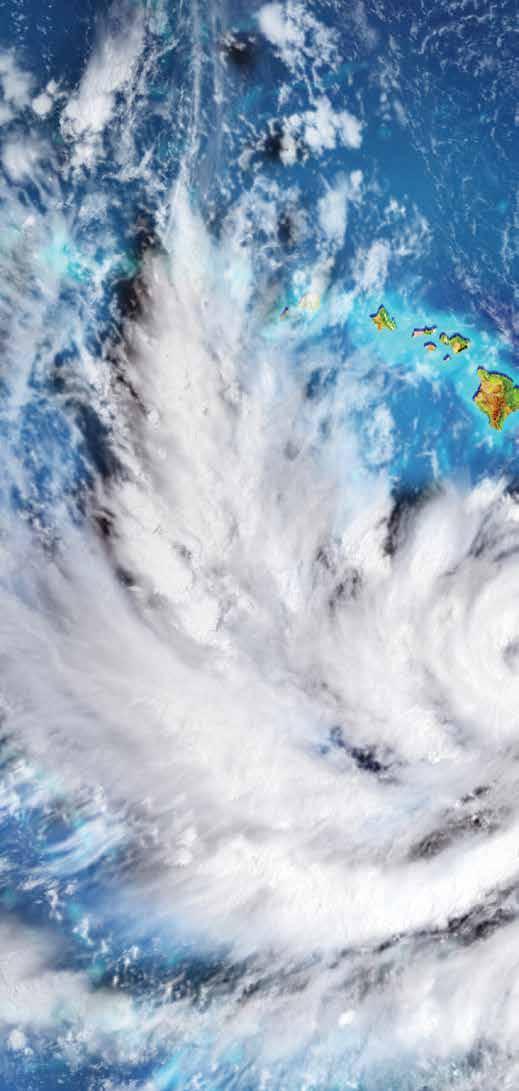
4 minute read
Nine Hurricane Myths Debunked
Coronavirus or no, this is still hurricane season in Hawaii. Is your building prepared?
With most eyes in Hawaii focused on the threat of COVID-19 in recent months, many people missed the start of hurricane season on June 1. According to the National Oceanic and Atmo- spheric Administration (NOAA) Central Pacific Hurricane Center and NOAA’s Climate Prediction Center, divisions of the National Weather Service, there is a 75% chance of near-or below-normal tropical cyclone activity during the Central Pacific hurricane season this year. The outlook also indicates a 25% chance of an above-normal season.
Advertisement
What that means is that be- tween two to six tropical cyclones are predicted for the Central Pacific hurricane region this year. This number includes tropical depressions, named storms and hurricanes. A near-normal season has four or five tropical cyclones.
But the most salient statistic is this: It only takes one.
Despite much news coverage in seasons past, many myths persist. Here we debunk nine of them.
Hurricane Myth #9: Only coastal areas are at risk from hurricanes.
While the drama of a hurricane crashing into a coastal area makes compelling front-page news, the effects are felt far inland. In fact, strong winds, heavy rain, tor- nadoes and inland flooding can spread hundreds of miles from the coast, leaving extensive damage and death in their wake. The effects of Tropical Storm Allison on the city of Houston, far removed from where the storm made landfall, were estimated at $4.8 billion.
Hurricane Myth #8: A storm surge is the deadliest part of a hurricane.
A storm surge is a wall of water pushed ashore as the center of a hurricane moves on land. While a storm surge can be deadly, more people die from inland flooding and flash floods of rivers and streams because they underesti-
mate the power of moving water.
Hurricane Myth #7: The upper floors of a condominium or office tower are a safe place to ride out a storm.
This is called “vertical evacuation,” and it’s a bad idea. Wind speed increases the higher you go, which can blow out windows and rip off siding. Plus, rising water could cause structural damage to the lower levels. If that’s not enough, high winds and rising water make rescue nearly impossible.
Hurricane Myth #6: A powerful hurricane will wipe out my property so why bother preparing?
Yes, there is always the possibility of losing it all in a major storm, but you should still take precautions to minimize damage as much as possible by boarding up windows, removing debris that can be potential projectiles, and trimming dead or dying limbs from trees around your property. These simple actions could mean the difference between a repairable house and a total loss.
Hurricane Myth #5: Since I have homeowner’s insurance, I don’t need to worry.
Most homeowner’s insurance has a high deductible for hurricane damage and does not cover flooding. Check your coverage and then supplement it with additional flood insurance if you’re in a flood-prone area.
A good reference and supplemental coverage program is the National Flood Insurance Program administered by the federal government.
Hurricane Myth #4: Before a storm, fill bathtubs and sinks to use as drinking water.
While water stored in a bathtub can be used for washing clothes, bathing or flushing toilets, it’s not considered sanitary enough for drinking. Use bottled water instead.
Hurricane Myth #3: You should crack the windows during a hurricane or tornado.
A common belief is that opening a window will equalize the pressure and keep your house from exploding during a storm, but studies show that
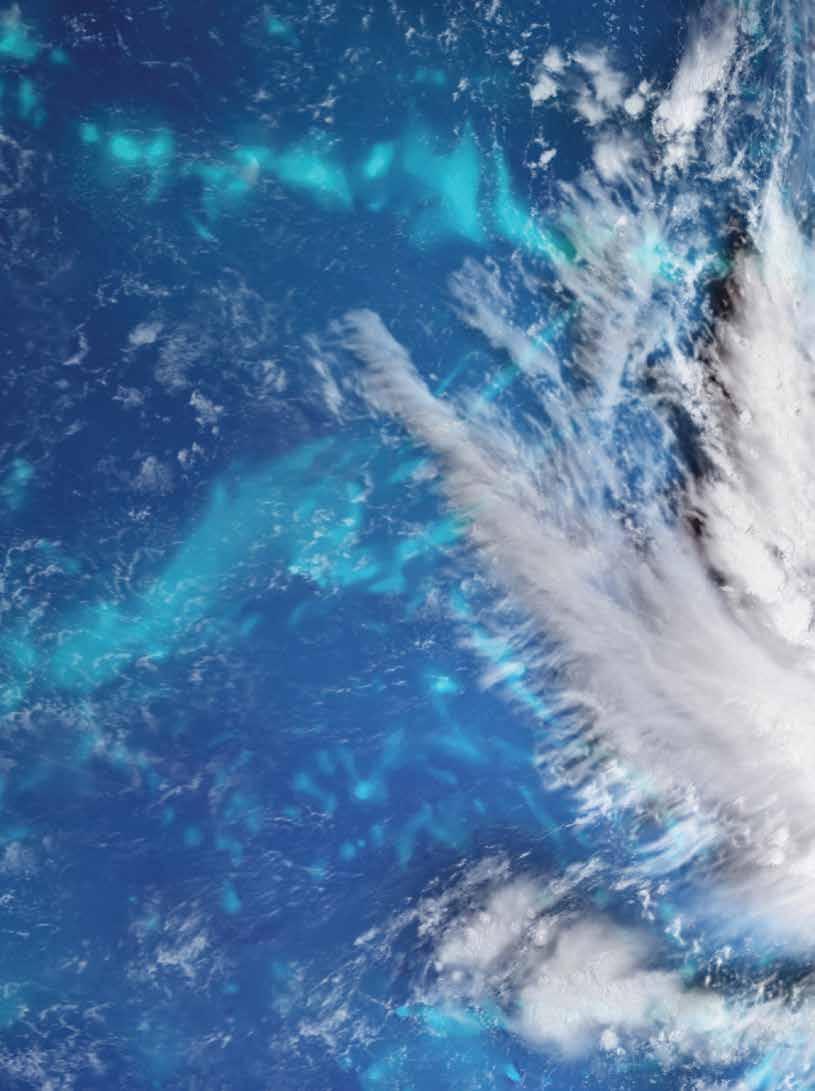
the best way to keep your home safe is to keep the wind out. While no house is airtight, boarding and shuttering up windows and doors is the best protection during a hurricane, especially from flying debris.
Hurricane Myth #2: Taping up windows will prevent them from breaking.
Tape does little to protect windows from being destroyed by flying debris. And if they don’t break, the tape will have to be scraped off after the storm. The best protection is to cover the windows with 5/8” plywood or special hurricane shutters.
Hurricane Myth #1: It will never happen here.
While the path of a hurricane can be hard to predict, Hawaii does have a long history of hurricanes making landfall. The best way to protect your life and property is to plan ahead before a storm forms, then heed the warnings and advice of local emergency management agencies. ❖
Source: Danny Lipford/todayshomeowner.com

Service Integrity Commitment
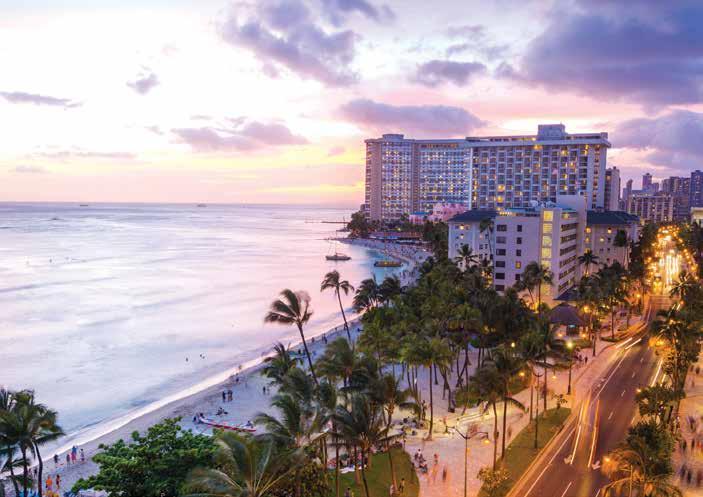
* the standard by which all others are measured
Serving Hawaii’s Condominum Associations Since 1990 Locally Owned & Operated 680 Iwilei Road Suite 777 • Honolulu Hawaii 96817
